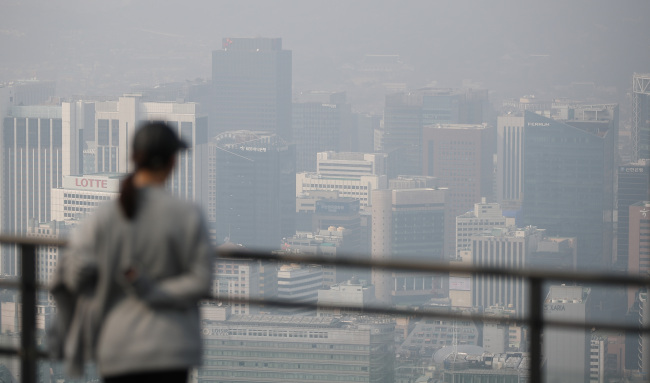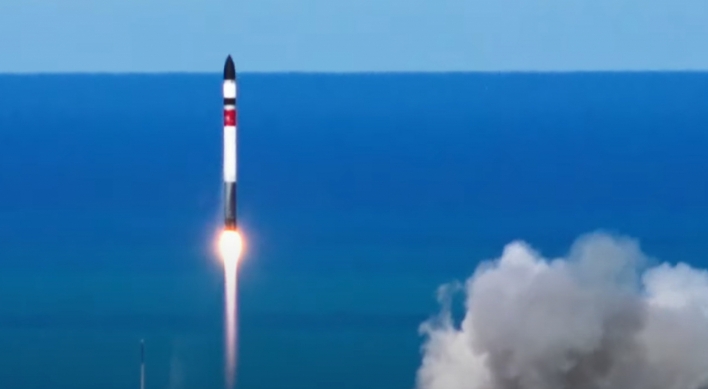China contributed to high fine dust level in Korea: research
By Jo He-rimPublished : March 21, 2018 - 15:56
China’s contribution to South Korea’s fine dust problem has been scientifically proven for the first time, a metrology institute said Tuesday.
According to findings by the Korea Research Institute of Standards and Science, the rise of the fine dust level to the range of 50 to 100 micrograms per cubic meter in Korea in spring is partly due to the large amount of fireworks used in China for its spring festival celebrating the Lunar New Year. The World Health Organization announce the daily average standard is 25 micrograms per cubic meter.
According to findings by the Korea Research Institute of Standards and Science, the rise of the fine dust level to the range of 50 to 100 micrograms per cubic meter in Korea in spring is partly due to the large amount of fireworks used in China for its spring festival celebrating the Lunar New Year. The World Health Organization announce the daily average standard is 25 micrograms per cubic meter.

Fine dust, or particulate matter 2.5 micrometers or less in diameter, are chemically composed of potassium and levoglucosan, and are often produced by burning fossil fuels or biomass. Its increase in the air has become a major threat to public health, as it could cause respiratory diseases and other problems.
The researchers measured the level of the two chemicals with their newly developed system and learned that only potassium increased in the air during spring in Korea.
In January 2017, the fine dust level here was at the “bad” level by the WHO’s standards, ranging from 50 to 100 micrograms per cubic meter, according to the institute.
The concentration level of potassium rose by seven times, but levoglucosan remained stable, which could imply that the substance emitted from the large amount of firecrackers used in China during its spring festival influenced the air quality of South Korea.
KRISS noted that while firecrackers are widely used in China during the spring holiday season, it is not customary in Korea to celebrate the Lunar New Year with fireworks.
As China suffers from its own fine dust level, the worsening air quality here was viewed to have been influenced by the inflow from the neighboring country.
Previous research supported the hypothesis. A joint study by the Environment Ministry here with NASA in 2016 showed that about 34 percent of fine dust in Korea comes from the neighboring country. The Korea Institute of Geoscience and Mineral Resources also found pigments of lead that are only produced in China in the air here.
But KRISS’ findings were the first to give scientific analysis on the correlation between the fine dust levels in Korea and China.
“From our study, we scientifically proved that the ultra-fine dust created in China moves long distances to reach the Korean Peninsula,” said Jung Jin-sang, a senior researcher at KRISS. “The result will be able to help the cooperative work with China to reduce the fine dust level in Northeast Asia.”
The research will be published in the April issue of an international academic paper, “Atmospheric Environment.”
By Jo He-rim (herim@heraldcorp.com)



![[Exclusive] Korean military set to ban iPhones over 'security' concerns](http://res.heraldm.com/phpwas/restmb_idxmake.php?idx=644&simg=/content/image/2024/04/23/20240423050599_0.jpg&u=20240423183955)

![[Graphic News] 77% of young Koreans still financially dependent](http://res.heraldm.com/phpwas/restmb_idxmake.php?idx=644&simg=/content/image/2024/04/22/20240422050762_0.gif&u=)



![[Pressure points] Leggings in public: Fashion statement or social faux pas?](http://res.heraldm.com/phpwas/restmb_idxmake.php?idx=644&simg=/content/image/2024/04/23/20240423050669_0.jpg&u=)










